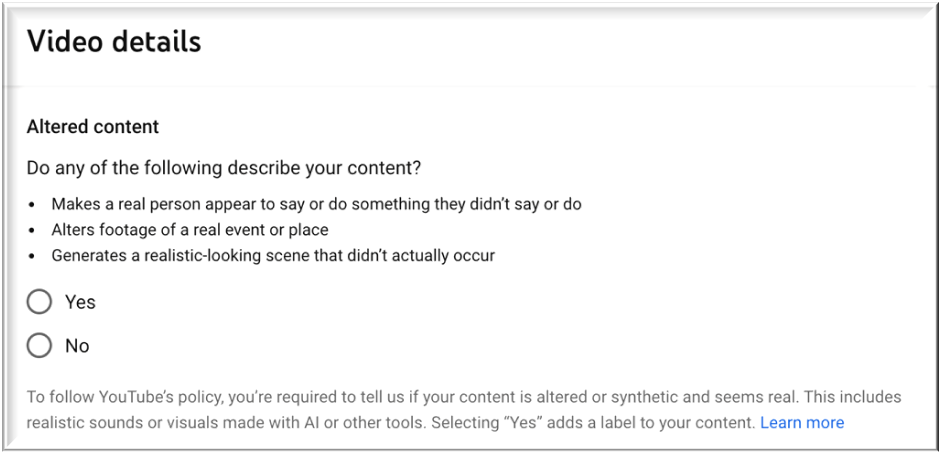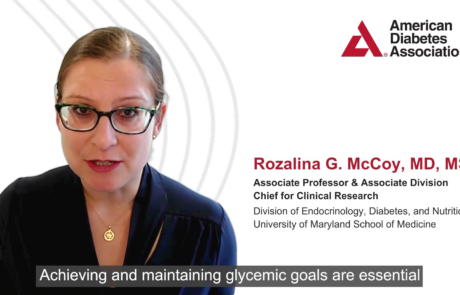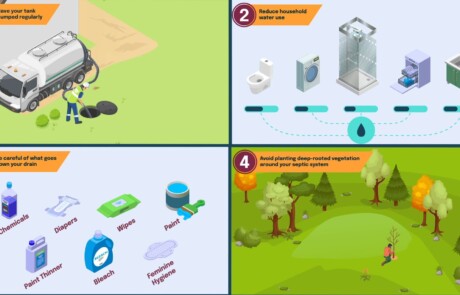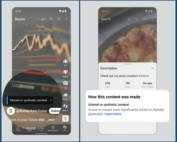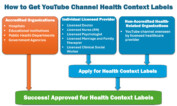Software companies like Adobe through Firefly, Meta through Video Gen, and OpenAI through Sora are making AI video easier and easier to produce. As a result, YouTube has developed new YouTube altered or synthetic content disclosure policies to help its viewers.
While you and your organization may not be engaged in AI alterations that must be disclosed, it’s worth noting where YouTube has drawn its line. You’ll then know how to tell if the videos you are watching contain altered or synthetically generated content.
New YouTube altered or synthetic content labels
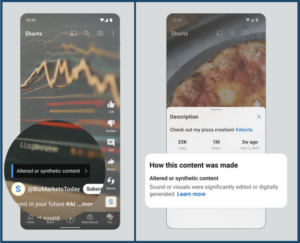
YouTube label for altered or synthetic content
Beginning in March 2024, YouTube rolled out new requirements for video content creators and began posting labels to notify viewers of videos altered in a way that might confuse or deceive viewers. YouTube says that the purpose of these new requirements is for “creators to disclose to viewers when realistic content – content a viewer could easily mistake for a real person, place, scene, or event – is made with altered or synthetic media, including generative AI.”
YouTube has introduced this feature on videos seen on phones and tablets, and will expand it later to videos viewed on desktop and TV.
What types of YouTube altered or synthetic content must be disclosed?
YouTube now requires creators to disclose content that:
- Makes a real person appear to say or do something they didn’t do – such as when a creator digitally replaces the face of one individual with another’s or synthetically generates a person’s voice to say something the person didn’t actually say.
- Alters footage of a real event or place – such as making it appear as if a real building caught fire, or altering a real cityscape to make it appear different than in reality.
- Generates a realistic-looking scene that didn’t actually occur – such as showing a realistic depiction of fictional major events, like a fictional tornado moving toward a real town.
Additional in-video label for sensitive content
Given the importance of certain events, such as elections, health, major world events, or financial matters, YouTube may also apply an additional label directly on the video, and not just in the description. These labels are designed to protect viewers against deceptive practices that may have a serious and/or personal impact. Examples include showing political leaders saying something they didn’t actually say or showing false “results” on a health treatment that are not real.
What types of altered content does NOT have to be disclosed?
MiniMatters clients might use AI for the following purposes:
- AI voices for scripted videos
- Closed captions
- Audio improvements
- Filters on faces to smooth out skin
- Blurred backgrounds on virtual recordings
Content creators are NOT required to disclose the effects on this list or similar ones.
Nor are creators required to file a disclosure for animations or videos of people doing something that’s obviously unrealistic. YouTube gives the example of someone riding a dragon or unicorn.
In sum, under YouTube’s policies, none of the above uses would require disclosure.
To delve more deeply into YouTube’s disclosure policies for altered or synthetically generated content, you can visit this resource page.
How do you disclose that your video has altered content?
Now, what if you DO have altered or synthetic content that needs disclosing? To indicate that your video has altered content that requires disclosure, you should follow these steps:
- After you’ve uploaded your video to YouTube, but before you publish it, select the video from your list of “Channel Content.”
- From the left navigation bar, click on “Details.”
- You will see a long list of “Video Details” options, including the title, description, thumbnail, audience, etc. When you click on “Show More,” you’ll also see options under the category “Altered Content,” as shown in the image below.
- If you select “YES,” then your video will include a label in your video description saying that the content has been altered or is synthetic.
- If you select “NO,” then no label will appear on your video description. But here’s the catch.
- If you select “NO,” but your content has, in fact, been altered or synthesized in a way that requires disclosure, you run the risk of YouTube applying a label that creators will not have the option to remove. Additionally, creators who consistently do not disclose this information may be subject to penalties from YouTube, including removal of content or suspension from the YouTube Partner Program.
These disclosures are not intended to affect the reach of your video or your ability to make money off videos, if you’re monetizing your channel. To be clear, you are permitted to use altered or synthetic content. But you must disclose it to your viewers if the altered content is the type that YouTube requires you to disclose.
Need help sorting out your video production?
MiniMatters can help. In addition to producing videos through live filming, animation, and virtual recordings we can help you with your video strategy. Call us at 301-339-0339.


